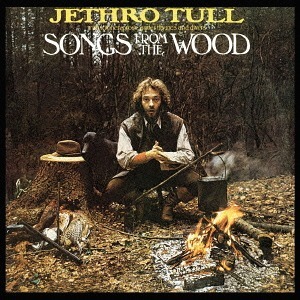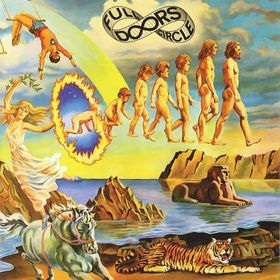While the shows featured some new material, the setlists relied heavily on material from the “classic” period, now that there were enough people and technology available onstage to recreate those pieces. In keeping with Fripp’s view of concerts as “a hot date with King Crimson”, each was recorded for posterity, and some were issued to the public. Live At The Orpheum presented 41 minutes distilled from two LA shows on that first brief tour, while Live In Toronto was an “official bootleg” of a full show a year later.
The scope of what this incarnation was able to accomplish can be experienced on Radical Action To Unseat The Hold Of Monkey Mind, a three-CD set available with a Blu-ray, and also a version that adds two DVDs. (The audience response is mixed out of the audio, but is discernable on the video.) While it purports to include a version of every song played on the tour, the discs are reorganized into distinct thematic sets. “Mainly Metal” and “Easy Money Shots” go through well executed tracks from the ‘90s-and-later lineups, as well as material that hadn’t been played live since the early ‘70s, with selections from In The Wake Of Poseidon and Islands. “Crimson Classics” features their “greatest hits” from the debut and Red, but that’s not to suggest it’s the go-to, especially since stuff from Larks’ Tongues In Aspic is on the first two.
In addition to the enhanced yet reverent arrangements (“Baby Elephant Walk”, anyone?) there is some “new” music here. The title suite is archetypical Crimson, with angular arpeggios over odd time signatures and Fripp fuzz, part one and part two framing a vocal section called “Meltdown”. And while it does have the word in the title and swaggers along, “Suitable Grounds For The Blues” isn’t about to be covered by Buddy Guy anytime soon. Tony Levin is forward in the mix here, as he is on the “Interlude” that follows. Second guitarist Jakko Jakszyk is also the lead vocalist, and while his polished approach sounds startling on the newer, less familiar tracks and certainly competent on the old favorites, one must remember that Fripp was a big fan of Daryl Hall. Each disc also includes a distinct piece for percussion, proving just how tight a dozen limbs could be.
Despite being both pricey and sprawling, Radical Action... is still a good entry into the world of King Crimson, covering a lot of ground and leaving only the ‘80s stage of the band unrepresented. Come to think of it, most Crimson releases lean on the expensive side, but you also get a lot of content for your dollar. And yes, the guy on the cover is pretty disturbing.
King Crimson Live At The Orpheum (2015)—3
King Crimson Live In Toronto (2016)—3½
King Crimson Radical Action To Unseat The Hold Of Monkey Mind (2016)—3½








